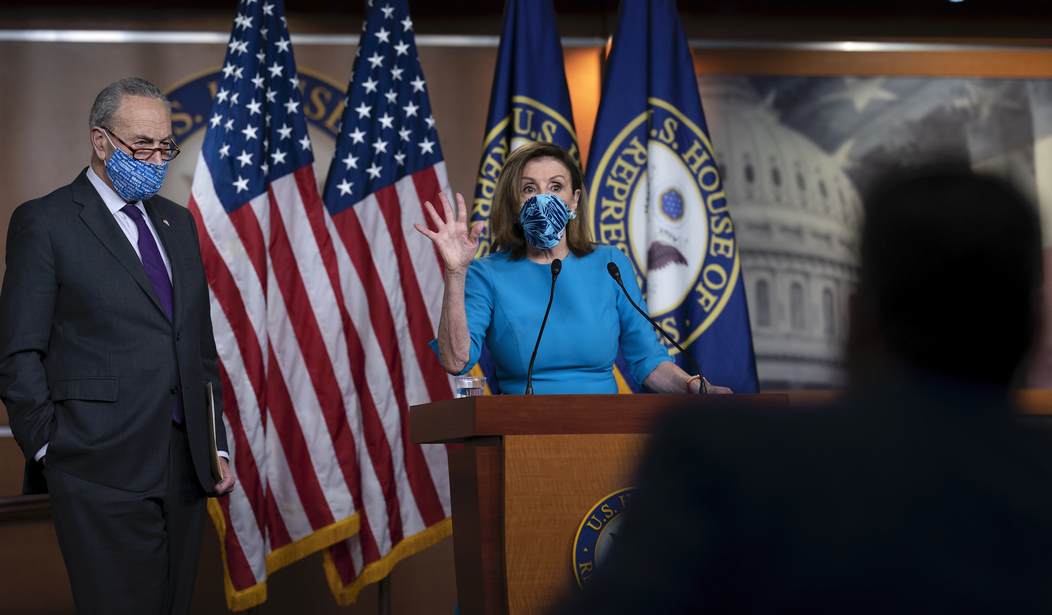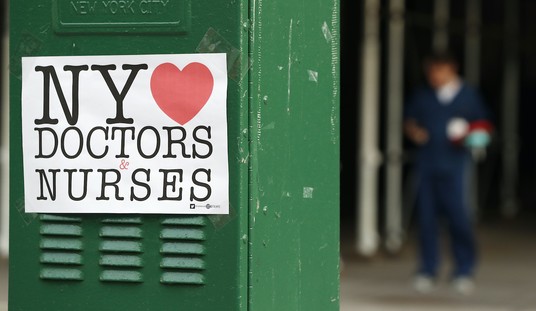As the financial crisis of 2008-2009 was unfolding in the early days of the Obama Administration, then US Congressman Rahm Emanuel is famously quoted as having told a conference of corporate CEOs at a Wall Street Journal sponsored event:
“You never want a serious crisis to go to waste. And what I mean by that is an opportunity to do things that you think you could not do before.”
The election of Joe Biden, and the victory of the two Democrats in the Georgia Senate runoff elections, put the Democrat Party in the position of being able to take advantage of the adage as stated by Emanuel.
But alas, all good things must come to an end, and the “good thing” that is the COVID pandemic for Democrats seems to be winding down in a more rapid fashion than they anticipated. This likely explains the sudden urgency to shove their COVID “Relief” bill down the throats of taxpayers — a bill that is in reality little more than a Democrat Party wish list in the making over the past 11 years since they last controlled the White House, House, and Senate.
Even with their water carriers in the press, the “math” of the pandemic tells the tale. New cases are falling in dramatic fashion after a post-holiday season surge, and combined with the effects of a large percentage of the population that will have been vaccinated or previously infected, the concept of “herd immunity” will likely be reached by the April-May time frame.
From the CDC website:
There has been a six-week downward trend in cases. The highest 7-day average of 249,303 occurred on January 11, 2021. The current 7-day average is 66,348 cases, a 73.4% decline. The 13.5% decrease in the 7-day average number of daily cases reported compared with the prior week provides an encouraging sign of recent progress.
The number of COVID-19 tests that come back positive (percent positivity) continues to decline. The 7-day average of percent positivity from RT-PCR tests is now 5.2%. Four states or territories remain at 10% positivity or higher. The 7-day average test volume for February 12-18, 2021 was 1,066,213, down 20.2% from 1,335,763 the prior 7 days.
The U.S. COVID-19 Vaccination Program began December 14. As of February 25, 2021, 68.3 million vaccine doses have been administered. Overall, about 46.1 million people, or 13.9% of the U.S. population, have received at least one dose of vaccine. About 21.6 million people, or 6.5% of the U.S. population, have received two doses of vaccine.
Fewer and fewer new cases, and a lower positivity rate for a declining number of tests on a weekly basis.
We are exiting the traditional cold and flu season during which all viruses tend to flourish.
The vaccination rate dipped briefly, but that was attributed to the extreme cold snap that descended from Canada down to the Texas-Mexico border. In the 70 day period reflected in the report, over 68 million doses of the vaccine were administered. Today there is news that pharmaceutical giant Merck, unable to develop a vaccine of its own, will lend its manufacturing capacity to Johnson & Johnson in an effort to increase the number of vaccine doses available world-wide.
Even if one were to assume that a vaccination rate of 1 million doses administered a day was maintained — it seems likely to increase — that would mean another 90 million doses would be administered by the end of May. Combining the over 100 million people who will have been vaccinated with the 30 million who have already been infected as determined by a positive test (actual infection rate is likely much higher due to those who went untested and false negatives before test accuracy improved), some infectious disease experts are predicting herd immunity by the middle of the spring.
Many health experts are optimistic that the end of the pandemic in the United States is in sight, although it’s not clear what the transition to “normal” will look like.
Some experts are more optimistic than others.
“I expect Covid will be mostly gone by April, allowing Americans to resume normal life,” wrote Dr. Marty Makary, a surgeon and a professor at the Johns Hopkins School of Medicine and Bloomberg School of Public Health, in a commentary in The Wall Street Journal.
He points to the sharp drop in COVID-19 cases in recent weeks as a sign that parts of the country are nearing, or have reached, herd immunity.
This decline in cases is “in large part because natural immunity from prior infection is far more common than can be measured by testing,” he wrote.
He estimates that the number of people who have recovered from a coronavirus infection — and likely have some immunity to the virus — is 6.5 times the 28 million confirmed cases.
That would mean that about 55 percent of Americans have natural immunity.
If you combine this with the 150 million people that Makary estimates will be vaccinated by the end of March, that brings the country close to the herd immunity threshold.
The White House claims that by July, there will have been enough vaccine doses manufactured to vaccinate every American.
The decline in cases and the positivity rate in testing are happening notwithstanding the fact that more and more states are opening commercial and recreational activities. Even in the handful of states holding on to the most restrictive measures, an ever-increasing number of residents are disregarding many of them and attempting to resume life in something of a normal fashion.
“Herd immunity” does not require a 100% vaccination rate. “Herd immunity” is a concept that addresses the ability of a virus to spread among a population that has a certain “critical mass” of members who are not susceptible to infection, and thus are not capable of spreading the virus to others. In such a circumstance the virus loses its ability to expand its presence in the population by moving from a host to a non-infected person.
While it seems natural that everyone would love to receive a $2000 check courtesy of the Democrats in Congress and the White House, the “urgency” of those getting that money was much greater back in October and November when there was no vaccine in sight, and there was no “light at the end of the tunnel” when it came to the COVID restrictions put back in place as many parts of the country realized a surge of new infections with the onset of the cold and flu season. The Trump Administration tried to reach an agreement with Nancy Pelosi and Chuck Schumer — but they refused at that time out of fear it would aid his re-election chances.
Now, the Democrats are promising that money but only as a “come-along” with hundreds of billions of dollars in spending on pet projects and causes of the Democrats and their radical left-wing interest group supporters.
If more and more states — and Americans living in those states — begin to see an end in sight with regard to pandemic restrictions, there is less and less justification for packaging wasteful spending projects under the ridiculous claim it involves “COVID Relief”.
The Democrats might be about to face that which Rahm Emanuel warned against — waiting too long to attempt to do that which is not normally possible.















Join the conversation as a VIP Member